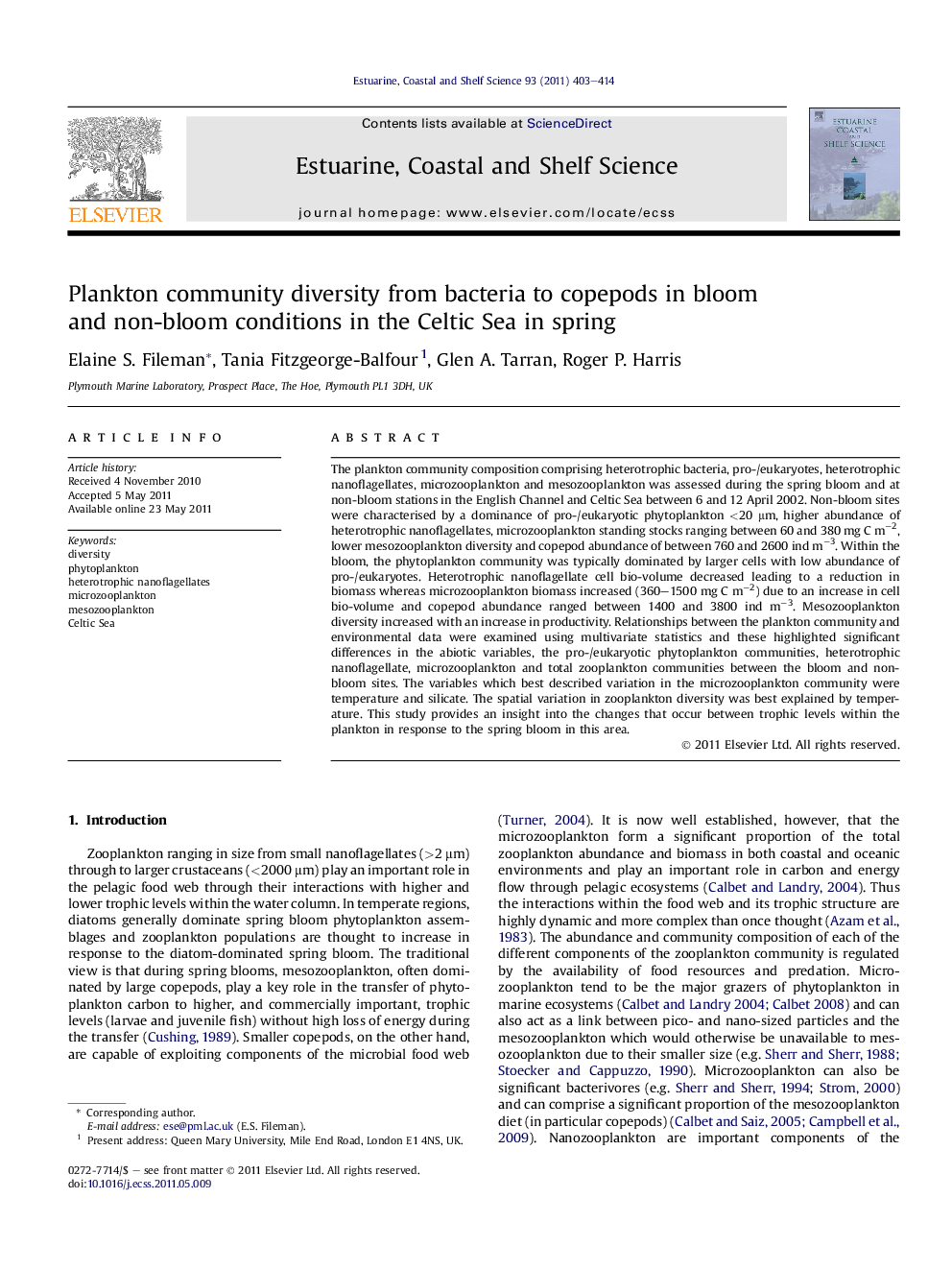| کد مقاله | کد نشریه | سال انتشار | مقاله انگلیسی | نسخه تمام متن |
|---|---|---|---|---|
| 4540413 | 1326667 | 2011 | 12 صفحه PDF | دانلود رایگان |

The plankton community composition comprising heterotrophic bacteria, pro-/eukaryotes, heterotrophic nanoflagellates, microzooplankton and mesozooplankton was assessed during the spring bloom and at non-bloom stations in the English Channel and Celtic Sea between 6 and 12 April 2002. Non-bloom sites were characterised by a dominance of pro-/eukaryotic phytoplankton <20 μm, higher abundance of heterotrophic nanoflagellates, microzooplankton standing stocks ranging between 60 and 380 mg C m−2, lower mesozooplankton diversity and copepod abundance of between 760 and 2600 ind m−3. Within the bloom, the phytoplankton community was typically dominated by larger cells with low abundance of pro-/eukaryotes. Heterotrophic nanoflagellate cell bio-volume decreased leading to a reduction in biomass whereas microzooplankton biomass increased (360–1500 mg C m−2) due to an increase in cell bio-volume and copepod abundance ranged between 1400 and 3800 ind m−3. Mesozooplankton diversity increased with an increase in productivity. Relationships between the plankton community and environmental data were examined using multivariate statistics and these highlighted significant differences in the abiotic variables, the pro-/eukaryotic phytoplankton communities, heterotrophic nanoflagellate, microzooplankton and total zooplankton communities between the bloom and non-bloom sites. The variables which best described variation in the microzooplankton community were temperature and silicate. The spatial variation in zooplankton diversity was best explained by temperature. This study provides an insight into the changes that occur between trophic levels within the plankton in response to the spring bloom in this area.
► Pro-/eukaryotic phytoplankton dominated at non-bloom stations.
► Microzooplankton biomass was higher during the spring bloom.
► Microzooplankton size structure during bloom -shift to dominance by larger cells.
► Heterotrophic nanoflagellates during bloom- shift to smaller-sized cells.
► Mesozooplankton diversity higher with an increase in primary productivity.
Journal: Estuarine, Coastal and Shelf Science - Volume 93, Issue 4, 20 July 2011, Pages 403–414